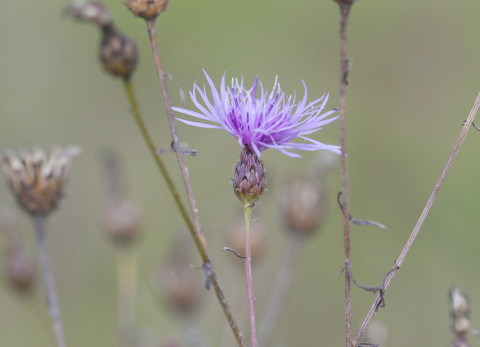Root chemistry of range-expanding plants may predict invasiveness risk

Root chemistry of range-expanding plants may predict invasiveness risk
Most plants that expand their range within their own continent - e.g. under pressure from climate change - won't end up dominating other species. According to NIOO-researcher Rutger Wilschut, possible invasiveness may be predicted by root chemistry not found in native plants. Wilschut recently defended his PhD thesis on range-expanding plants in Wageningen.
For most of the past summer, the Netherlands looked more like some Mediterranean country: ideal conditions for plants that have been moving their range boundaries north under pressure from climate change, to areas that were previously unsuitable. Summers such as that of 2018 are bound to give these 'intracontinental range-expanders' a further advantage.
"It's long been assumed that range-expanding plants outrun their natural enemies in the soil", says NIOO-researcher Rutger Wilschut, "as those soil organisms are more constrained in their dispersal." In their native area, the soil community helps to keep the plants under control. Disrupting that mechanism could result in the kind of invasiveness exotic species originally from a different continent are sometimes notorious for.
Not too afraid
Wilschut's research demonstrates that in most cases, range-expanding plants end up with a very similar set of enemies in the soil compared to their original range, limiting the potential to become dominant. "So we need not be too afraid that Mediterranean species will start edging out native Dutch vegetation", says Wilschut. "But we will be seeing more and more of them."
He's making an exception for species with a strongly different root chemistry compared to native plants. "It's a relatively small number, but we do have to take them into account as they may cause considerable nuisance."
Predicting ecological responses to climate change has become a key challenge in ecology. Range-expansion - to more northern areas or higher altitudes - is one of the ways in which species respond to climate change. But the ecological consequences remained largely unknown. Wilschut's research, which is part of a larger ERC-project led by his supervisor Wim van der Putten, aims to change that.
Worms & roots
To test his ideas, Wilschut studied root-feeding nematodes. These worms may be tiny, but they're widespread, occupy important positions in the food web and are relatively straightforward to identify and quantify, making them ideal for the purpose.
Wilschut and his colleagues collected plant and soil community samples along a 2000 kilometre-long latitudinal transect from Greece to the Netherlands. He also carried out greenhouse experiments, studying southern-European range-expanding plants including spotted knapweed (Centaurea stoebe), Pyrenean cranesbill (Geranium pyrenaicum) and yellow salsify (Tragopogon dubius) and congeneric species that occur natively in the Netherlands.
In their new locations, most of these range-expanders attracted roughly the same number of root-feeding nematodes as in their original range. The differences with their native congeners in terms of community composition proved to be relatively small, and did not suggest an overall pattern. However, novel root chemistry did turn out to have a significant effect on nematode response.
Exotic species
One of the species Wilschut studied, Centaurea stoebe, produces a unique volatile compound that strongly repels root-feeding nematodes. "If such a plant expands its range to a new area, and its root traits are too different for the local soil community to have a meaningful response to, it has a major impact on soil life: on nematodes, and the same is probably true for bacteria and fungi." In North America - where it was introduced from eastern Europe in the late 1800s - Centaurea stoebe is considered an invasive, exotic weed.
Wilschut's supervisor and ERC-project leader Wim van der Putten concludes: "Range-expanding plants come with both advantages and problems. They can make our ecosystems more climate resistant, but there can also be the odd newcomer that causes nuisance. It's important to identify and monitor that small number of potentially problematic species. And the chemical traits of the roots are decisive - that's what this PhD thesis has taught us."
With more than 300 staff members and students, the Netherlands Institute of Ecology (NIOO-KNAW) is one of the largest research institutes of the Royal Netherlands Academy of Arts and Sciences (KNAW). The institute specialises in water and land ecology. As of 2011, the institute is located in an innovative and sustainable research building in Wageningen, the Netherlands. NIOO has an impressive research history that stretches back 60 years and spans the entire country, and beyond.
More information:
- Reseacher Rutger Wilschut, NIOO department of Terrestrial Ecology, r.wilschut@nioo.knaw.nl
- Project leader Prof. Wim van der Putten, NIOO department of Terrestrial Ecology, w.vanderputten@nioo.knaw.nl
- Science information officer Froukje Rienks, Netherlands Institute of Ecology (NIOO-KNAW), tel. +31-6-10487481, f.rienks@nioo.knaw.nl
PhD Thesis:
- Range-expanding plant species and their belowground neighbours - digging into novel interactions, Rutger A. Wilschut, Wageningen 2018




